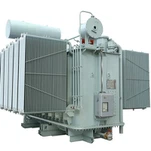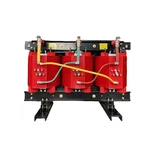Transformer taps allow for adjustment of the transformer's output voltage to accommodate variations in the input voltage or to meet specific load requirements. Here's how they work:
1. What Are Transformer Taps?
Transformer taps are connection points on the transformer's winding that allow for variations in the number of turns of the winding that are in use. By changing the number of active turns in the winding, the voltage ratio of the transformer can be adjusted.
Typically, taps are found on the high-voltage winding of the transformer because a small change in the number of turns on the high-voltage side results in a larger voltage change.
2. Tap Changer Types:
Off-Load Tap Changer (OLTC):
Requires the transformer to be de-energized before adjusting the tap.
Often found in smaller transformers or where voltage variation is not frequent.
On-Load Tap Changer (OLTC):
Allows for tap changes while the transformer is energized and under load.
Common in larger transformers, such as those used in power distribution, where voltage adjustments may be necessary without interrupting service.
3. Operation of Taps:
Adjusting Voltage: By changing the tap position, you effectively change the turns ratio of the transformer. This can either increase or decrease the secondary voltage. For example:
Tap Up: Decreases the number of turns in the high-voltage winding, increasing the secondary voltage.
Tap Down: Increases the number of turns in the high-voltage winding, decreasing the secondary voltage.
Voltage Regulation: Taps are often used to maintain the secondary voltage within a specific range, even when the primary voltage fluctuates.
4. Application Example
Suppose you have a transformer with a nominal secondary voltage of 120V. If the primary voltage drops, the secondary voltage may also drop below 120V. By switching to a higher tap, you can increase the secondary voltage back to the desired level.
5. Taps Range and Steps
Taps are usually provided in discrete steps, such as ±5%, ±2.5%, etc. The exact range and steps depend on the transformer design and application.
In summary, transformer taps are essential for maintaining voltage levels within desired ranges, ensuring stable and efficient operation of electrical systems.
4o











